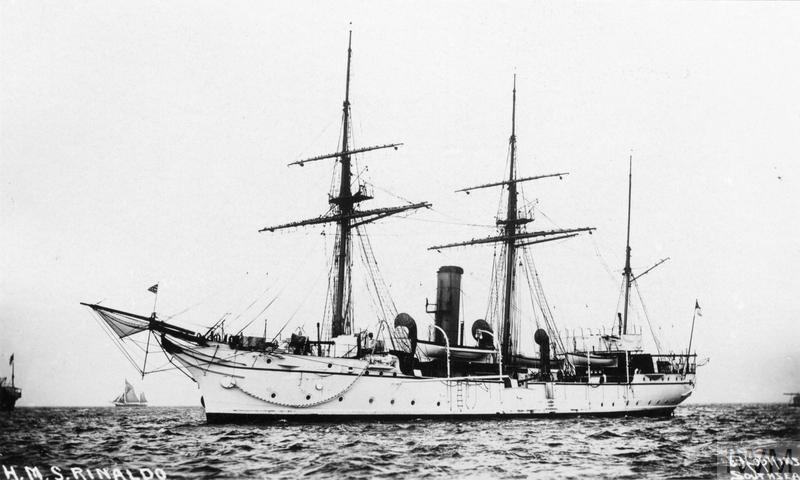|
Condor-class Sloop
The ''Condor'' class was a six-ship class of 10-gun screw steel sloops built for the Royal Navy between 1898 and 1900. ''Condor'' foundered in a gale, prompting the Royal Navy to abandon sailing rigs for its ships; all the others in the class survived into the 1920s. The last of the class, ''Mutine'', survived until 1932 as a Royal Naval Volunteer Reserve drill ship. Design The ''Condor'' class was constructed of steel to a design by William White, the Royal Navy Director of Naval Construction. They were powered by a three-cylinder vertical triple expansion steam engine developing and driving twin screws.Winfield (2004), pp.278-279. Sail plan The class was originally designed and built with barque-rigged sails, although some pictures show ships of the class with a barquentine rig. ''Condor'' was lost in a gale during her first commission, and the contemporary gunnery pioneer Admiral Percy Scott ascribes her sinking to the encumbrance of sails, and furthermore believed that ... [...More Info...] [...Related Items...] OR: [Wikipedia] [Google] [Baidu] |
HMS Shearwater (1900) Under Sail
Five ships of the Royal Navy have borne the name HMS ''Shearwater'' after the shearwater, a seabird: * was a 10-gun launched in 1808 and sold in 1832. * was a wooden paddle packet launched in 1826 as the GPO vessel ''Dolphin''. She was transferred to the Royal Navy and renamed in 1837, and was sold in 1857. * was a wooden screw sloop launched in 1861 and broken up by 1877. * was a launched in 1900. She was transferred to the Royal Canadian Navy as a depot ship A depot ship is an auxiliary ship used as a mobile or fixed base for submarines, destroyers, minesweepers, fast attack craft, landing craft, or other small ships with similarly limited space for maintenance equipment and crew dining, berthing and ... in 1915 and was sold in 1922. * was a launched in 1939 and sold in 1947. {{DEFAULTSORT:Shearwater, Hms Royal Navy ship names ... [...More Info...] [...Related Items...] OR: [Wikipedia] [Google] [Baidu] |
Barque
A barque, barc, or bark is a type of sailing ship, sailing vessel with three or more mast (sailing), masts having the fore- and mainmasts Square rig, rigged square and only the mizzen (the aftmost mast) Fore-and-aft rig, rigged fore and aft. Sometimes, the mizzen is only partly fore-and-aft rigged, bearing a square-rigged sail above. Etymology The word "barque" entered English via the French term, which in turn came from the Latin language, Latin ''barca'' by way of Occitan language, Occitan, Catalan language, Catalan, Spanish, or Italian. The Latin ''barca'' may stem from Celtic language, Celtic ''barc'' (per Rudolf Thurneysen, Thurneysen) or Greek ''baris'' (per Friedrich Christian Diez, Diez), a term for an Egyptian boat. The ''Oxford English Dictionary'', however, considers the latter improbable. The word ''barc'' appears to have come from Celtic languages. The form adopted by English, perhaps from Irish language, Irish, was "bark", while that adopted by Latin as ''barca ... [...More Info...] [...Related Items...] OR: [Wikipedia] [Google] [Baidu] |
Binnacle
A binnacle is a waist-high case or stand on the deck of a ship, generally mounted in front of the helmsman, in which navigational instruments are placed for easy and quick reference as well as to protect the delicate instruments. Its traditional purpose was to hold the ship's magnetic compass, mounted in gimbals to keep it level while the ship pitched and rolled. A binnacle may be subdivided into sections and its contents typically include one or more compasses and an oil lamp or other light source. Other devices such as a sand timer for estimating speed may have been stored in the binnacle as well. Binnacle can also refer to the cluster of instruments and switches mounted in a circular casing on or near the steering column of a car. History The construction of many early (mid-18th century) binnacles used iron nails, which were later discovered to cause magnetic deviations in compass readings. As the development of the compass and understanding of magnetism progressed, greater at ... [...More Info...] [...Related Items...] OR: [Wikipedia] [Google] [Baidu] |
Cape Flattery
Cape Flattery () is the northwesternmost point of the contiguous United States. It is in Clallam County, Washington on the Olympic Peninsula, where the Strait of Juan de Fuca joins the Pacific Ocean. It is also part of the Makah Reservation, and is the northern boundary of the Olympic Coast National Marine Sanctuary. Cape Flattery can be reached from a short hike, most of which is boardwalked. Cape Flattery Trail, with photographs. The westernmost point in the contiguous United States is at Cape Alava, south of Cape Flattery in Olympic National Park. However, the westernmost tip of Cape Flattery is almost exactly as far west as Cape Alava, the difference being approximately 5 seconds of longitude, about , at high tide and somewhat more at low tide. The Cape Flattery Lighthouse is on Tatoosh Island, just off the cape. Makah Bay and Neah Bay are on either side of the cape. Neah Bay, Washington is the closest town to the cape. History James Cook Cape Flattery is the oldest perm ... [...More Info...] [...Related Items...] OR: [Wikipedia] [Google] [Baidu] |



